
Sydfynske Øhav, the South Funen Archipelago, is located south of the Danish island of Funen, comprising 55 islands and islets, at the mouth of the Baltic Sea. It is one of Denmark's most scenic areas, and should be a top destination of anyone taking the time to explore Denmark outside the capital.
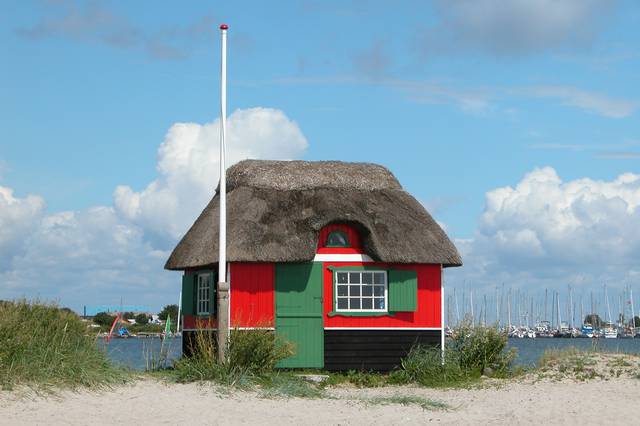
- Langeland, a long narrow island, with wild horses and grazing cattle.
- Ærø, a proud island with a rich martoime history, and some lovely villages to boot.
- Lyø
- Avernakø
- Bjørnø
- Drejø
- Skarø
- Hjortø
- Birkholm
- Strynø
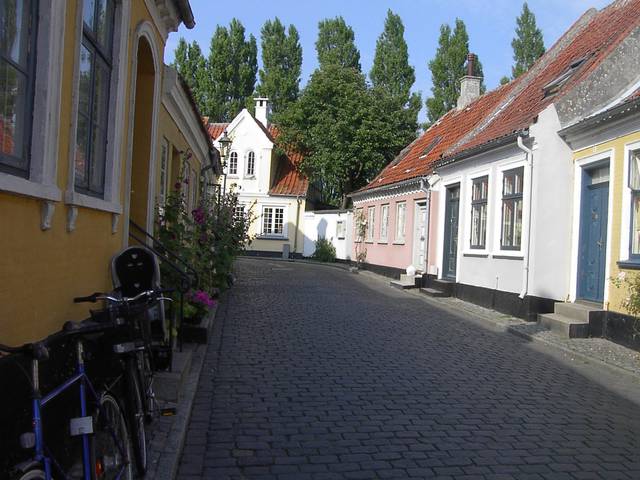
- Rudkøbing On Langeland Island
- Ærøskøbing - The pretty main city and principal port of Ærø island
The islands were formed during the last ice age, by ice sliding over the area from the south, only the ancient hilltops was spared from submersion, and forms the many islands and islets peaking above the sea everywhere. The area has a milder climate than the country's average, and because of this, is home to flora and fauna not seen anywhere else in Denmark. There are strong local movements to convert the area into a National Park.
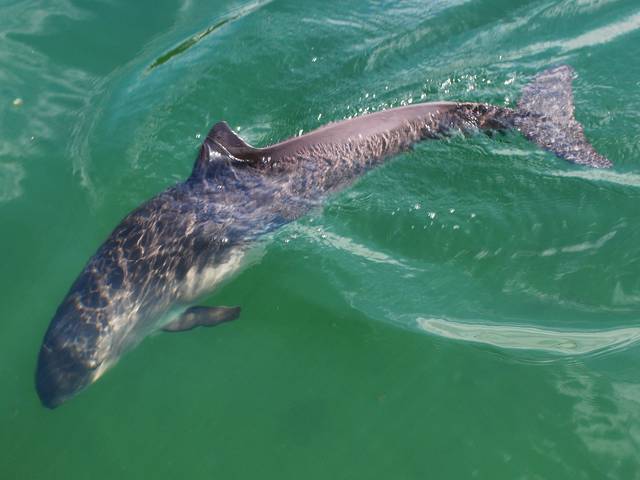
The area is one of the most diverse natural environments in the country, and is designated as an international wildlife protection area, as it is home of several rare and protected species. If you are interested ornithology the many shallow waters around the islands and islets is a treat with thousands of birds and colonies, one of the more notable is the Arctic Tern, which migrates to Antarctica and back every year. This is the longest regular migration by any known animal. You also find Shore Crabs, Beach Otters and - rare for Denmark - Seals in the shallow waters and beaches. On dry land, up on the many islands you can find badgers, stoats and several types of deer. While possibly the most exciting animals are found beneath the water: the Harbour Porpoise, Denmark's only resident whale population.

Islands in the archipelago listed in east to west order; note that there are many more islands and islets in the area, but these are the ones with ferry traffic that are possible to visit without making special arrangements. Most other islands are closed during much of the year for the protection of local wildlife. For the remainder of the year, short stays are permitted, which is interpreted by the authorities as a day or a night. While you are normally not allowed to set up a tent, you are permitted to sleep on the beach in a sleeping bag, if necessary under a primitive cover like a tarpaulin.
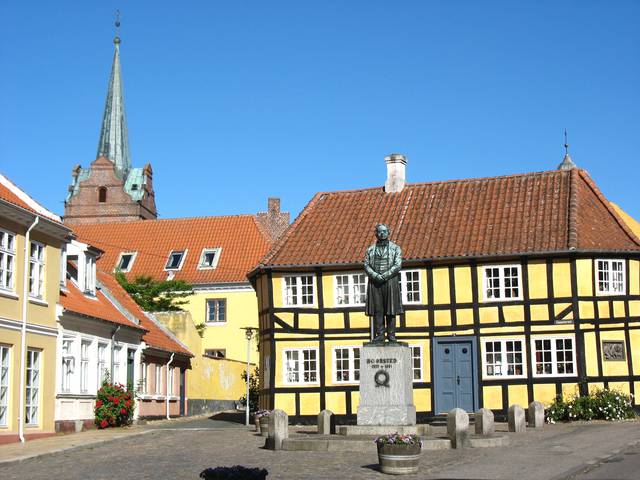
Ferry: from Rudkøbing, 30 minutes 6-8 departures per day, 70 DKK . Marina: 54º 54,2'N 10º 37,7'E; VHF:16 ? berths at ? DKK; Depth:1,5m; Speed:3 knots. Strynø covers 5km², and is home to around 200 people. It is one of the most successful island societies in the country, and one of few who have managed to stale the endemic depopulation - in no small part thanks to an open and inventive but closely knit community, including many artists and craftsmen, which might be worth visiting. Like most of the islands in the archipelago, Strynø is a picturesque combination of farms and wetlands with many birds during the summer months. But to many the real attraction is the pretty village, which is usually densely build up for a Danish island - and in fact before depopulation took hold, it used to be the 2nd most densely populated island in the whole country. The nice red brick buildings are mostly from the 18th and 19th century, and some of them feature some quite spectacular ornamentation, are built up around several village ponds and small alleys and twisting roads- it makes for a very pleasant exploration. Remember to look out for the many inventive Weather vanes on top of the buildings, it makes for good photos and a reminder of the islands maritime history.
- Bådmuseet, Strynø Brovej 12, +45 50 98 13 06. May-Oct: Daily 10-16. Is a summer only exhibition inside Øhavets Smakkecenter run together with the Museum of Langeland, it shows the natural and cultural history of the archipelago, with special focus on maritime. While, not especially large, it is worth your time if you are on the island. 30 DKK.
- Strynø Mølle, Møllevejen 30. No public access. The islands beautiful old windmill dates back to 1832, and is lovingly restored and preserved. Though there is no public access, it makes for some good photo opportunities in the vicinity
- Strynø Kirke, Kirkevej 16. Originally from 1589, unfortunately the only remaining part from the old church is the porch. The modern day church was build in 1867 in typical Danish style. It is worth going inside to see the renaissance pulpit from 1618 - a relic of the old church.

Ferry from Marstal on Ærø, 25 minutes, 1 departure per day 70 DKK .
Marina: 54º 55,7' N 10º 30,0' E; VHF; 10 berths at ? DKK; Depth:2m; Speed: 3 knots.
Birkholm Is only 1km² and home of a stubborn but loving 8 people, making it one of the smallest populated islands in the country, how long the island can sustain a full year population remains to be seen, but permanent life on the island will probably be a thing of the past in a not too distant future.
Non the less it is a pretty, but incredibly flat place, with the highest point towering a proud 1,8 meters over the sea! some fine old farm houses which the remaining population does a commendable job trying to maintain, since many of them are now empty and the rest used as vacation home for "Danish foreigners". There are some nice beaches and good fishing once you've toured the island. If you are a hunter, you might be lucky to run into the yearly Pheasant or hare hunts - you can even rest assured your "evil deeds" does some good, as it supports life on the island.

Ferry from Svendborg, 1 hour, once or twice daily, 85 DKK
Marina: 54º 58,0' N 10º 29,6' E; VHF: 16,13,12 & 6; 20 berths at 70 DKK; Depth: 1,9m; Speed:3 knots.
Hjortø means deer island in Danish, but as there have never been deer living here, it is more likely to refer to a name. The island is only 0,9 km2 and 12 people live on the island, though they have neither a shop, church or anywhere to eat but home, and although there is room for a single car on the ferry, the island is car free. Like Birkholm the island is incredibly flat, and consequently it is protected by dikes, which has failed during storms several times during storms over the years. Outside the dikes you'll find meadows with a rich bird life reaching all the way to coast, which are mostly rocky, but there are some beaches with sand, mostly at Hjortø hale on the eastern part of the island - around the old mill is a good spot, if the tide is low, you can walk across to several small islets surrounding the island on the sandbanks. Due to a fire set on by lightning, many of the old houses burned down, and the remaining homes have replaced the picturesque thatched roofs with more practical and fire resistant tiles.

Ferry from Svendborg 30 minutes, 4-5 times daily, 85 DKK
Marina: 55º 00,7' N 10º 28,5' E; VHF: 16,13,12 & 6 ; 50 berths at 100 DKK; Depth: 2,5m; Speed: 4 knots.
Skarø is 2 km² and located at the exit of the pretty Svenborg sound, because of the proximity to the main land it gets many one-day visitors, and since the ferry ride is so short it allows for commuting, the island has like Strynø, managed to halt the depopulation and gained new blood in the last few years, so that 36 people live permanently on the island now, most of them in the nice village build up around a village pond.
The island is like most of the islands very flat, but the tallest point towers an impressive 8 meters over the island sea, and has fittingly been named Vesterbjerg - the "Western mountain", it has some good views and a small chapel dating back to around 1900, which includes a memorial for the soldiers of a downed RAF bomber from WWII. The coast is mainly rocky but still invites for a good swim, particularly on the west coast or on the sand reef to the north. On some of the grassland, you can see Scottish Highland cattle. Local resident Preben Sørensen conducts casual guided tours during the summer, where he tells about life on a Danish island (phone +45 22 56 31 99).

Ferry from Svendborg 55 minutes, 4-5 times daily, 85 DKK
Marina: 54º 55,5' N 10º 25,3' E; VHF: 16,13,12 & 6; 15 berths at 50 DKK; Depth: 1,2m; Speed: no planing.
Drejø is at a staggering 5km² one of the larger islands, and it has around 70 inhabitants, due to the long sailing times it is also in real threat of island death, with many of the houses used as vacation homes. But the ferry, which arrives on the western part of the island, also takes you to the border between the shallow waters - on the southern part of the island, which is mainly rocky, but have a few beaches, and the more open and deeper waters to north, where there is good fishing to be had. Only half the island is farmland, the rest is made of grassy meadows, lakes, and other picture perfect landscape, which is home of the islands famous white deer, and then of course there is also the islands only village - with some pretty half timbered houses, though tragically many of the old houses burned in a tragic fire in 1942. Remember to watch out for the house numbers - which is not really house numbers but old symbols.
The locals jokingly refer to a local driving rule which dictates that you are not allowed to use seatbelts on the island, since if you do, in all likelihood you are driving to way too fast - so leave the car in Svendborg, and jump on the local taxi instead - a tractor with a wagon for passengers going between the harbour and islands accommodations, or grab a bike, rental is conveniently available in the first house you see walking of the ferry.
- Drejø Kirke, Kirkevejen 1. Build in 1535, this is likely the only Danish church build before Denmark's reformation, which has never had a Catholic priest - though it was build under tragic circumstances, when two baptist parties drowned when their boat capsized, en route to their church on another island.
- Gl. Elmegaard, Hestmaevej 1, +45 23 62 71 17. Jun-Aug 12.30-18. The oldest farmhouse on the island dating back to at least 1535, there is a small museum, a café and a small store in the building.
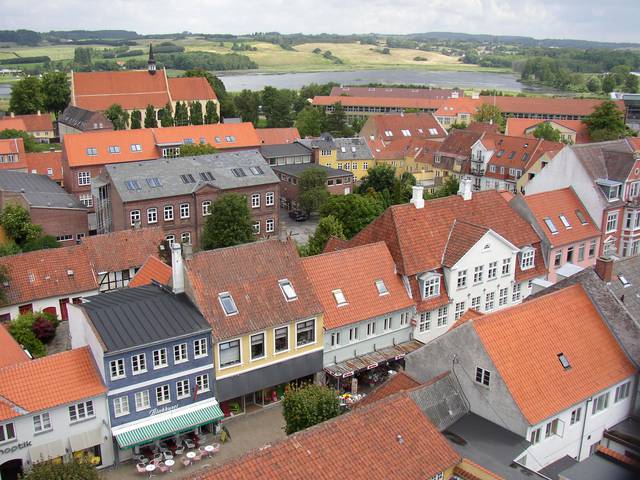
Ferry from Faaborg 30 or 70 minutes, 5-8 times daily, 80 DKK
Marina: 55º 02,4' N 10º 15,1' E; VHF: none ; 55 berths at ? DKK; Depth: 2,5m; Speed: 3 knots.
Avernakø is at 6km² one of the larger ones in the island sea, with around a 100 people living on the island, which was originally two, Avarnak and Korshage, but were joined together by a dam in the 1940'ties, after one too many had drowned crossing the shallow water in bad weather. The island is unusually hilly compared to the other islands, with cliffs up to 18 meters facing the coast, which while mostly rocky, still invites for a swim in a few places - mostly on the northern coast. For good wide views over the entire archipelago, hike over Bjergs Banke near the islands wind-turbine.
The two villages Munke and Avernak are protected for preservation, and makes for some good photo's in the right spots. The ferry harbour and one of two marinas, are a few hundred meters northwest Avernak, and it is possible to rent bikes here, to the east is Korshavn, a small fishing hamlet - with no fishermen, but the other small marina. South of Munke and Avernak you'll find the remains of 3 dolmens (Viking burial mounds), you can also trace down Høje Stene which used to be even more impressive, but are now essentially a pile of rocks.
- Avernakø Kirke, Hovedvejen 19. The local church is more than 350 years old, but have been altered several times, not until 1876 did it get its current bell-tower. In 1685 local farmers discovered bronze age 6 gold pans, now on display in the national museum in Copenhagen, but replicas are stored inside the church.

Ferry from Faaborg, 17 minutes, 6-10 times daily, 52 DKK
Marina: 55º 04,1' N 10º 15,2' E; VHF: none ; Single pier at 30 DKK; Depth: 2m; Speed: no limits
Bjørnø is 1,5km² and the island nearest Funen which has worked to its advantage in recent years, and the depopulation of 60 man strong community have been kept at bay. The terrain is undulating, with the highest point, Højbjerg towering 24 meters above the sea - it is vigilantly guarded by a rather large bull and its cows - so watch out. To the south-west you'll find tall erosion cliffs, home of a large colony of Sand Martins which nests in holes in the cliffs, and beautiful views of Funen and the neighbouring islands. On the opposite side the island flattens, and in the north west you'll find a salt marsh with a rich bird life. The beaches around the island are narrow and rocky, but popular with fossil hunters. Water Voles are known to undermine the roads, so be vigilant if you bike around the island, which is the only alternative to walking, since the ferry does not take cars.
The small village in the centre of the island, is probably the islands greatest attraction. Unlike the rest of the country, Bjørnø did not experience the parcellation, where farms were moved from villages out in the fields during the 18th century agricultural reforms, so many pretty white half timbered houses, many with thatched roofs, still stand along the villages two streets just as they were hundreds of years ago, its all really idyllic on a summers day. North of the village stands a lone defunct canon, possibly a hint to the islands popular smuggling activities in the old days. There is no shopping on the island, other than a small summer-only kiosk selling ice cream and other sundries.

Ferry from Faaborg 45 or 70 minutes, 5-8 times daily, 80 DKK
Marina: 55º 03,1' N 10º 09,6' E; VHF: ; 80 berths at ? DKK; Depth: 2,5m; Speed: no limits
Lyø, Fairly large at 6km², today around 160 people live on the island, but during the 16th century the whole population was eradicated by pillaging and epidemics, it was resettled by 24 families the local squire had been kind enough to give the choice; "Lyø or your head?" to add to the history, most of the nations school children have heard of the capture of King Valdemar the Victorious for ransom, which happened on this island, adding to the sense of history are the many burial mounds dotted around the island, most famous is Klokkestenen.
The landscape is varied with two lush valleys, separated by a 24 meter high ridge, cheekily called 'The Mountain' (Bjerget), but it does offer some great views, save a small forest to the east, most of the island is dominated by lush farmland. The coast is mainly rocky, with low cliffs on some parts, but to the east there are some good bathing spots around what called Revet and Det Ny Land to the east, you can walk around the island along the coast in around 5-7 hours.
On the middle of the island you find the lone village, it's incredibly well preserved and have several protected buildings, many dating back the 18th century and a few even earlier. It's mainly made up of old half-timbered houses build up around a few village ponds and criss-crossed by small alleyways and broken up by some huge beautiful old trees. There is also a fine church, and a nice old 4 winged vicarage, one of the finest buildings on the island. To get here there is a bike rental at the harbour (+45 62 61 73 80) or you can event rent a horse (+45 62 61 96 10).
- Lyø Kirke, Lyø Bygade 3. The village church dates back to the reformation, and is build of massive fieldstones. The circular cemetery is unique in the country, and quite beautiful.
- Klokkestenen, Vestensvej (off the road, hidden away by big trees. A dolmen chamber in a grove up on a high hill dating back to around 3500–3100 BC, It takes it's name from the fact that if you hit the upper stone in the right places you will hear a bell-like sound - and according to legend, your wish will come true.
- Lyø Søfatsmuseum, Kærlighedsstien 1, +45 20 63 18 83. Daily 10-17 from June 15th-August 15th, otherwise by appointment. Odd collection of items brought home by seafarers on the island, initiated by an old sailor and his wife, at just 20m2 it's rather small, but still packed with all sorts of small things from all over the world. The owners are happy to show people around in Danish, German or English. 20 DKK.
- Elmekilden, Smedegyden 8. A well-kept half-timbered farm house from 1873, well-preserved clog-shop to boot, the building is inhabited though, so don't waltz in unannounced.
Naturally, given the geography, fishing is a very popular activity in the area. The main hunts are Sea trout, Cod and Flounder. As everywhere in Denmark a license is cumpolsory for all anglers between age 18-67, and can be bought at all tourist agencies in the region for a small fee. If you are up for cultural challenge, and more importantly can convince the organisers into speaking English, Ølejr is something to consider. It has been a summer fixture since the 70'ties and still holds a grain of the bygone hippie days. Primitive camps are set up on several small islands; including the archipelago islands of Drejø, Lyø and Skarø, during the summer - each week usually with a different theme like Yoga or Folk music. Everything is done collectively, including the finances, and responsibility for a successfully camp shared equally among participants. Contact +45 70 22 55 81 or email [mailto:info@oelejr.dk] for inquiries, and remember to point out that you don't speak any Danish.
If you are fortunate enough to wind up dining on the island, it will likely be a real treat. Dive into traditional Danish food made from fresh produce sourced locally, most likely from the very island you're on. Unfortunately as most of the islands as mentioned suffers from depopulation, its hard to keep up to date with the many closures and the occasional, but usually short lived, new openings. Best to check with locals once you arrive, or the tourist agencies on the mainland before you depart. If you're planning to stay overnight, make sure you bring some provisions with you in case dining is unavailable. That being said, if you are not a German tourist or a Danish mainlander, most locals will probably invite you into their homes for dinner if you are shameless enough to hint the possibility, and show a genuine interest in the island you're on.
- Peters Kabys, Strynø Brovej 12 (Strynø, +45 60 77 88 67. May-Oct: Cafe: noon-17, dinner (W-Su) by appointment only. Cafe in the Smakkecenter boat rental center. Uses fresh local produce to cook up an ever-changing menu with whatever is available, often inspired by the mediterranean kitchens.
- Stryno Kro, Stjernegade 4 (Strynø, +45 62 51 53 00. M-F 11-20,F-Sa 11-23,Su 11-20. Traditional Danish food served the islands old blacksmith. Call ahead to make sure its open, especially outside the summer season
- Strynø Gl. Mejeri, Nørrevej 6 (Strynø, +45 62 51 51 92. Daily 11-21 (but in low season reservations must be made before 11). Small restaurant in the islands old dairy, the menu is tinted towards traditional Danish cuisine.
- Café Tante Sofie, Østerhovedvej 4 (Skarø, +45 62 20 1 202. A café which serves hot and cold drinks, as well as food if you remember to pre-order. Also a small store with home-made ice cream and other local delicacies.
- Sommersild, Skarø Brovej 7 (Skarø, +45 50 40 74 81. Cafe with its own smokehouse, translates to excellent fish. Also has occasional outdoor barbeques, and freshly made sandwiches. If you plan to eat here it's a good idea to pre-order, 85-115 DKK.
- Drejø Kro, Vigsvej 1 (Drejø, +45 62 21 47 87. Traditional Danish inn with traditional Danish fare. Like many other places in the area, its a good idea to call ahead to make sure the place is open.
- Avernakø Købmandshandel, Hovedvejen 31 (Avernakø, +45 62 61 75 76. Grocery store, Bike hire, Harbour Café & Grill.
- Lyø Stald Cafe, Vestensvej 7 (Lyø, +45 63 60 40 30. M-Th noon-22,F-Sa noon-01. May be closed, please update if you have any information on this café. Mains 70-185 DKK.
Don't come here for the night-life, as there is none! That being said, locals jokingly refer to Drejø as the local Ibiza, and during July, the primitive camp grounds on the island, is sometimes home of some ravish parties, though it is hard to predict exactly when they happen. If you are on the island, you could always try your luck, as there really isn't likely to be anything else going on.

A few of the major islands are large enough to support their own guides, though practically they are part of the region.
- Langeland - Is the Eastern border of the island sea, and very much worth a visit.
- Tåsinge - Is a large island located mid way between Funen and Langeland and connected to them by bridges.
- Ærø - Forms the southern boundary for the archipelago, and has a long and proud maritime history.
- Sønderborg - the biggest city in the southern part of the Jutland peninsular, it is reachable by drive from the ferry stop at Fynshav.
